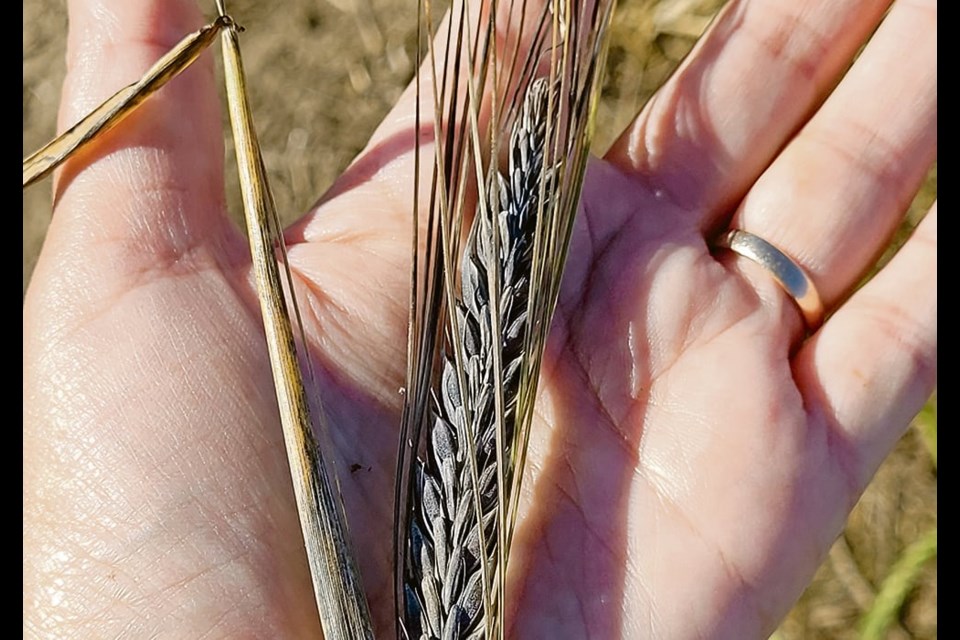WESTERN PRODUCER — The Agriculture Canada variety could generate media buzz and get Canadians thinking about barley on their dinner plate
There is purple rice and purple wheat. Now, there is a purple barley.
Agriculture Canada scientists in Brandon have developed a new line with the temporary name of HB211147. The name isn’t great for marketing, but the unique and purple barley could become a hit with consumers.
“I’m really excited about it,” said Ana Badea, a barley breeder with Agriculture Canada in Brandon. “It received support for registration and is available for licensing.”
Badea designed the hull-less barley after talking to farmers and people in the food industry about ways to increase consumer demand for food barley.
Right now, barley is rarely served in North American homes or in restaurants, even though it is loaded with beta glucans (a heart healthy fibre), vitamin B and other nutrients.
“Talking to our end users, the majority of them… say their main user (for barley) is the pet industry,” Badea said.
A purple barley could generate media buzz and get Canadians thinking about barley on their dinner plate rather than their dog’s bowl.
The purple colour comes from anthocyanins, the purple or dark red pigments found in grapes, berries and some vegetables. Research shows that anthocyanins, powerful anti-oxidants, may provide several health benefits:
- lower blood pressure
- reduce risk of heart disease
- prevent cancer
It seems unlikely that teenagers will put down a bag of Doritos and eat a bowl of purple barley anytime soon, but older adults could become a massive market for healthy grains.
Data from the United Nations shows that the number of people older than 80 could triple, going from 143 million in 2019 to 426 million in 2050.
“By 2050, one in six people in the world will be over age 65 (16 percent), up from one in 11 in 2019 (nine percent),” the UN says. “One in four persons living in Europe and North America could be aged 65 or over (by 2050).”
The demographic shift is creating an opportunity for foods with a “health halo”, like grains loaded with fibre, nutrients and cancer-fighting compounds.
However, Badea’s purple barley has competition in the healthy grain market. U.S. Department of Agriculture scientists have designed a purple rice called USDA Tiara.
The variety also contains anthocyanins, making it more nutritious than ordinary white rice.
As well, Pierre Hucl, a University of Saskatchewan breeder, developed a purple wheat variety that was registered several years ago.
The market may be getting crowded, but people in the food and beverage industry are interested in a nutritious and purple barley, Badea said.
“There’s a lot of buzz around it but I’m looking forward to concrete actions. Next year, in March, is the time when people could apply for it (licensing the variety).”
You can no longer count on social media to deliver important news to you. Keep your news a touch away by bookmarking SASKTODAY.ca's homepage at this link.
Here's why you should bookmark your favourites.
Subscribe to SASKTODAY.ca newsletter to get our daily news to your inbox.




